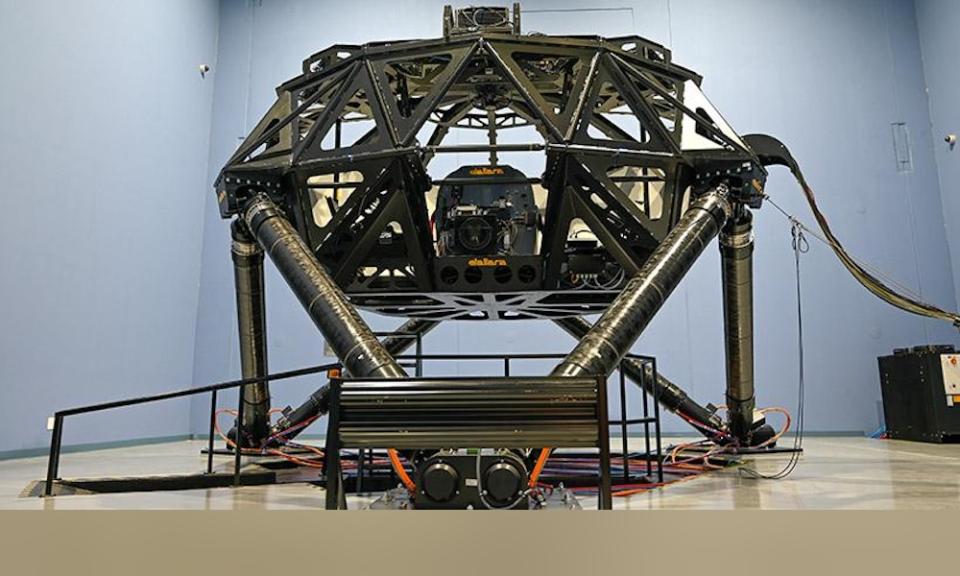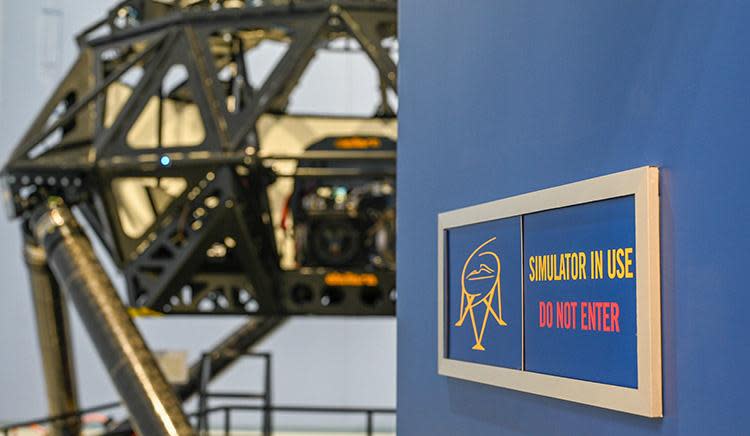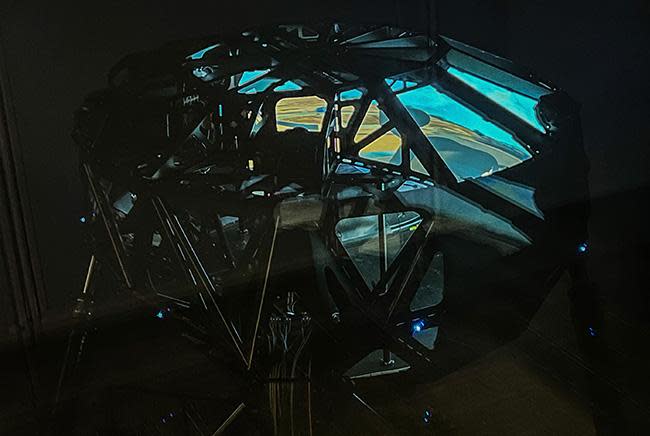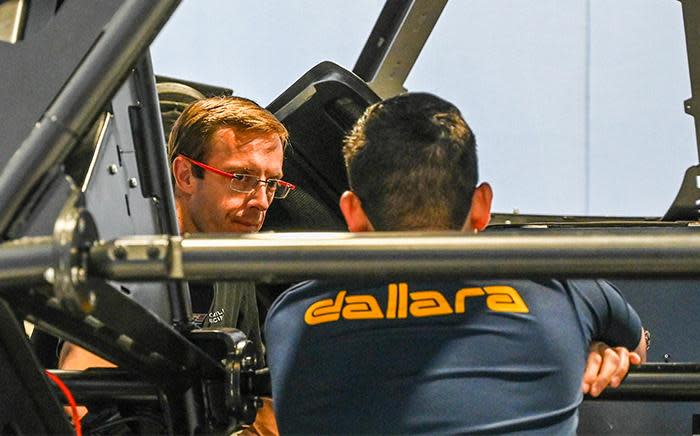Getting real: How simulators prep IMSA teams and drivers

Fifteen years ago, Sebastien Bourdais had his first experience with a racing simulator. Not a video game, mind you, but a complicated, computer-driven simulator similar to those used to train airline pilots.
The experience was both positive and negative, Bourdais said.
“It was the real car, pedals and steering,” Bourdais said. “But right away, I felt like I was missing the main part, which is the vibrations of the car and the sense you get from the seat through your butt. There are some unquantifiable cues that are not visual or steering related. You only really get that from the car on track.”
That experience in 2008 in a Formula 1 simulator during his time with Red Bull is far removed from the experience Bourdais gets today in Cadillac Racing’s “driver-in-loop” simulator. Bourdais has spent hundreds of hours behind the wheel of a modern simulator — wearing shorts, he notes with a laugh — and the technology and realism have vastly improved in just 15 years.
Simulators serve as realistic and important tools in motorsports, and they’ve improved vastly in recent years. But they still can’t fully replace the real-life experience.
“It’s proven incredibly valuable as far as setup work and correlation and everything else, but as far as I’m concerned it’s not quite the same,” Bourdais said. “I can turn 500 laps on the simulator and get to the track and still feel like it’s different. It speeds up our preparation a bit, but when I get in the car, I hit the reset button.”
In less than two decades, simulators have moved from a novelty to an essential tool — if not the most essential tool — for the teams in the IMSA WeatherTech SportsCar Championship. The complicated, expensive machines help drivers stay sharp when they can’t be on track, certainly, but the primary benefit of simulators lies with the strengthening of feedback between the talent that propels the car and the brains who make it work.
“The magic of the simulator is the driver-engineer relationship,” said Brian Pillar, Wayne Taylor Racing with Andretti Autosport’s technical director. “Sports car racing is unique in that we have two drivers in the car, each with their own strengths or weaknesses or things they like in the car. Getting in the simulator and working with the drivers and optimizing the setup to make both of them happy or get to a compromise, that’s played a big role for us (in the simulator) that we really didn’t see before.”
Racing simulators aren’t new — Lotus used them as early as 1965 and even sold their original version of a simulator to other race teams — but simulators have advanced significantly in a short period of time.
Located in large facilities at team or manufacturer headquarters, the machines look like something from a science fiction film: A large metal pod mounted above ground on legs that use computer simulations to manipulate the pod in precise, incremental motions replicating the car’s motion over specific racetracks.
They’ve developed rapidly in recent years, providing realism for drivers and accurate data for engineers.
“Part of it is how much it’s improved mimicking what happens in real life and also just knowing what work you can do on it to get something accomplished with it,” said Ricky Taylor, who works regularly on Honda Performance Development’s simulator outside Indianapolis with WTR Andretti co-driver Filipe Albuquerque.
“When we go to the simulator now, you fill a day with so much work,” Taylor said. “It crosses so much off your list. Since I’ve started, simulators have come a long way. … We’re doing all the setup changes, lots of things that you would be able to try only on race weekends in the past.”
A simulator’s applications are realistic, their impact immediate. After BMW M Team RLL finished second last month in the GTP class at Long Beach, Nick Yelloly was praised for his work in the BMW simulator leading up to the race and the 2023 season.
Yelloly’s contribution even warranted a nickname.
“I’m lucky I have the ‘Sim God’ as my teammate,” co-driver Connor De Phillippi said. “He’s been developing our simulations back in Munich. You would not believe the amount of days he puts in there; he should be given a raise. The correlation we’re able to get from the sim now is really impressive. They’ve put a hell of an effort into that, and that’s helped us a lot for this weekend.”
Team members in Germany frantically rewrote computer code throughout the Long Beach weekend after the BMWs encountered difficulties in the opening practice session. That’s become one of the most significant contributions of simulators — the ability of race engineers to make on-the-fly adjustments based on data generated from sim sessions.
And the technology improves as fast — or faster, even — as the cars.
“It’s interesting how everything has grown,” Pillar said. “As a team and drivers, we’re pushing it to the next level that doesn’t exist. There’s a current project going on that has gotten to the point that we’re requesting the actual steering wheel (from the race car) start to be used (in the simulator). The controls of the GTP car have become so complex… that the drivers have to adjust now when they get back to the track.”
What began as a rather rudimentary simulator that Lotus experimented with in the mid-1960s has evolved far beyond racing video games or even the F1 simulator Bourdais stepped into in 2008.
“In the past five to 10 years, the way simulators have progressed is phenomenal,” said Ben Barnicoat, who joins Vasser Sullivan Lexus teammate Jack Hawksworth on the Toyota Racing Development simulator every week in Salisbury, North Carolina. “Formula 1 and NASCAR teams hugely rely on them. Our sport isn’t like tennis or soccer where you can be out on the field or the court every day practicing. That’s our equivalent of being able to practice between events. It’s hugely valuable.”
Aside from providing needed repetition and assisting engineers in gathering data, sims help drivers learn unfamiliar tracks. Barnicoat, who joined the WeatherTech Championship for the 2022 season, spent hours familiarizing himself with realistic replications of tracks he’d never seen.
As the season progresses, drivers who are unfamiliar with it will learn Indianapolis Motor Speedway’s 14-turn, 2.439-mile road course in preparation for the TireRack.com Battle on the Bricks on Sept. 17.
While close to the real thing, experienced drivers immediately point out the subtle nuances in the differences between the two, even as the technology of simulators improves.
“What’s changed a lot are the models, which are getting really close to reality,” said Bourdais, who now frequents the Indianapolis simulator of Dallara, chassis maker for Cadillac. “It’s just hard to get there because you’re going in only with your eyes. But in terms of pre-event and post-event and correlation, it’s gotten much better. It’s quite incredible to see how close the data is between the real thing and the sim. You can’t really tell which one is which. It’s a great tool.”

 Yahoo Autos
Yahoo Autos 


